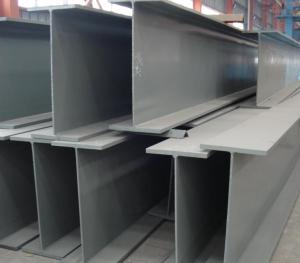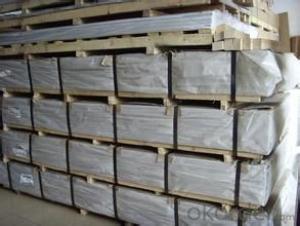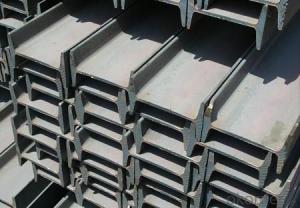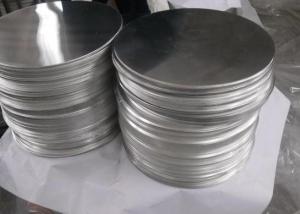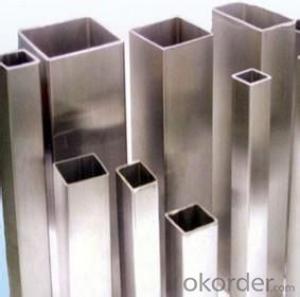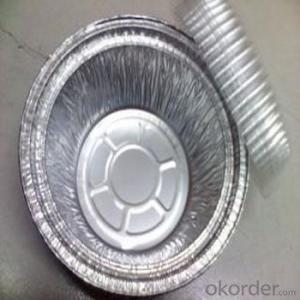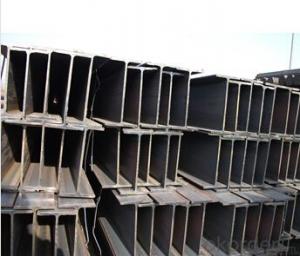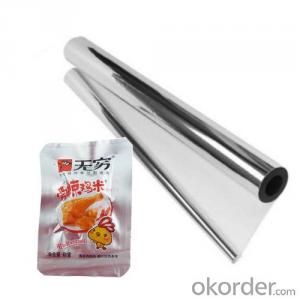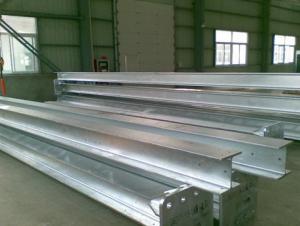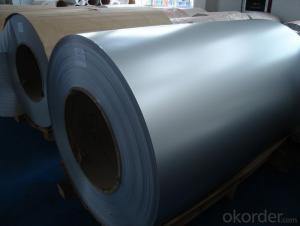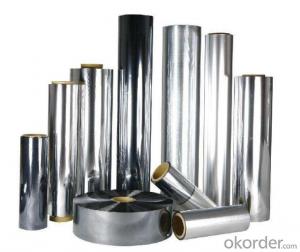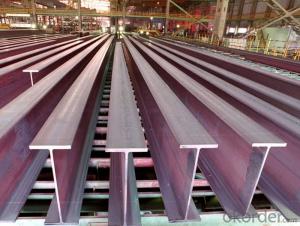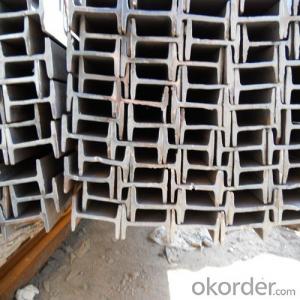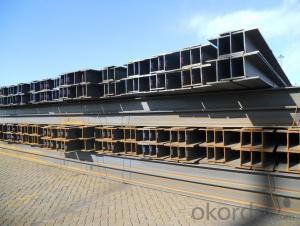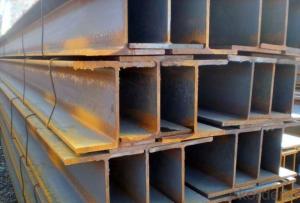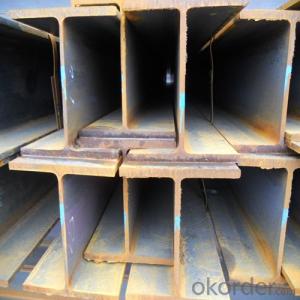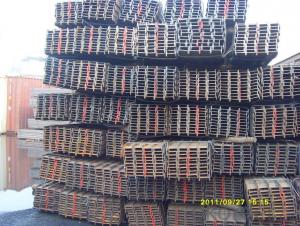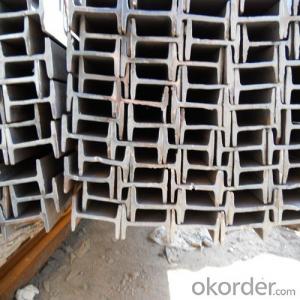Aluminium H Beam
Aluminium H Beam Related Searches
Aluminium H Beam Beam Material Simple Beam Bridge Rear Bumper Beam Lvl Beam Kanye West Ultralight Beam Snl Ultralight Beam Kanye West Snl Beam Launcher Aluma BeamHot Searches
Aluminium Wire Mesh Manufacturers India Ceiling Fan Lowest Price Aluminium Scaffold Planks Sale Aluminium Walkway Mesh Prices Alice In Chains Store H Type Scaffolding Electricity Generation By Fuel TypeAluminium H Beam Supplier & Manufacturer from China
Okorder.com is a professional Aluminium H Beam supplier & manufacturer, offers integrated one-stop services including real-time quoting and online cargo tracking. We are funded by CNBM Group, a Fortune 500 enterprise and the largest Aluminium H Beam firm in China.Hot Products
FAQ
- Certainly! Steel H-beams are suitable for the construction of railway infrastructure. Commonly referred to as I-beams or universal beams, these H-beams are widely used in construction due to their structural strength and versatility. They are designed to withstand heavy loads and provide stability, making them appropriate for various applications in railway infrastructure. Railway bridges, tracks, and other supporting structures can all benefit from the utilization of steel H-beams. They are frequently employed as girders to support the weight of railway tracks, ensuring stability and durability. Additionally, H-beams can be utilized in the construction of railway buildings such as stations and platforms. The advantages of using steel H-beams in railway infrastructure construction are numerous. Their high strength-to-weight ratio allows for efficient use of materials while maintaining structural integrity. Corrosion resistance is also a key attribute, particularly for railway infrastructure exposed to harsh weather conditions. Furthermore, steel H-beams can be customized to specific sizes and shapes to meet the requirements of a particular railway project. In summary, steel H-beams are an excellent choice for the construction of railway infrastructure due to their strength, durability, and versatility. They provide the necessary support and stability for railway tracks, bridges, and other structures, ensuring the safe and efficient operation of the railway system.
- There are numerous environmental advantages associated with the utilization of steel H-beams in construction projects. To begin with, steel possesses exceptional durability and longevity, resulting in structures built with H-beams having a lengthier lifespan in comparison to alternative materials. Consequently, this diminishes the necessity for frequent maintenance, repairs, and replacements, thereby decreasing waste production and resource consumption. Furthermore, steel is an exceedingly recyclable material. At the conclusion of their lifecycle, H-beams can be conveniently disassembled and recycled, thereby reducing the requirement for new steel production. Moreover, recycling steel necessitates less energy and emits fewer greenhouse gases when compared to the production of new steel from raw materials, leading to a considerable reduction in carbon emissions. Moreover, steel H-beams exhibit a superior strength-to-weight ratio, allowing for the construction of lighter structures. Consequently, this reduces the overall weight of the building, resulting in reduced transportation and logistics costs. Additionally, it minimizes the amount of foundation material required, thereby mitigating the environmental impact of excavation and reducing the consumption of natural resources. Furthermore, steel is resistant to pests, like termites, and does not undergo rot or decay. This eliminates the need for chemical treatments that can prove harmful to the environment. By utilizing steel H-beams, builders can avoid the use of pesticides and preservatives, thereby promoting a healthier and more sustainable construction process. In conclusion, the utilization of steel H-beams in construction projects provides numerous environmental benefits. It increases the longevity of structures, encourages recycling and diminishes the demand for new steel production, reduces transportation and logistics costs, and eliminates the necessity for chemical treatments. These factors collectively contribute to a more sustainable and eco-friendly approach to construction.
- Steel H-beams are commonly used in construction and structural engineering for various applications. They are widely used in building frameworks, bridges, and platforms, providing support and stability in heavy load-bearing structures. H-beams are also utilized in the construction of industrial buildings and warehouses, as well as in the manufacturing and automotive industries for the fabrication of machinery and equipment. Additionally, they find application in the construction of high-rise buildings, stadiums, and infrastructure projects, where their strength and durability are essential for withstanding heavy loads and structural integrity.
- To calculate the torsional constant for steel H-beams, you need to consider the geometry and dimensions of the beam. The torsional constant, denoted as J, represents the resistance of the beam to torsional or twisting loads. The formula to calculate the torsional constant for an H-beam is given by: J = ((b1 * h1^3) + (b2 * h2^3))/3 Where: J = Torsional constant b1 = Flange width of the top flange h1 = Flange height of the top flange b2 = Flange width of the bottom flange h2 = Flange height of the bottom flange First, measure the dimensions of the H-beam, specifically the flange width and height for both the top and bottom flanges. Ensure that the measurements are in the same units, such as inches or millimeters. Next, substitute the measured values into the formula. Square the height values (h1 and h2) and cube the height values (h1^3 and h2^3). Multiply the appropriate flange width and the cubed height for each flange, and sum them together. Divide the result by 3 to obtain the torsional constant (J). It's important to note that the torsional constant assumes a uniform distribution of torsional stress across the section and neglects any warping effects. Therefore, it provides an approximate measure of the beam's resistance to torsion. For accurate results, it is recommended to consult relevant engineering specifications or perform detailed structural analysis using advanced software.
- Yes, steel H-beams are highly resistant to seismic activity. The unique structural design and material properties of steel make H-beams capable of withstanding seismic forces and vibrations. They have high strength, ductility, and flexibility, which allows them to absorb and dissipate seismic energy, minimizing damage and ensuring the structural integrity of buildings during earthquakes.
- Steel H-beams are generally not highly resistant to magnetic fields. Steel is a ferromagnetic material, meaning it can be magnetized and can interact with magnetic fields. However, the degree to which steel H-beams are affected by magnetic fields depends on various factors such as the composition of the steel, its thickness, and the intensity of the magnetic field. In general, the magnetic permeability of steel is higher than that of non-magnetic materials, which means it can be more easily affected by magnetic fields. Therefore, steel H-beams may experience some level of distortion or attraction when subjected to strong magnetic fields. However, the impact of magnetic fields on steel H-beams is typically minimal in most practical applications and does not significantly affect their structural integrity.


